Introduction: The Alarming Truth Behind Google's Data Breach
Google's data breach in the past few months shocked the world of cyberspace. When millions of users came to know about the possible exposure of sensitive information, concerns about cybersecurity, data protection, and platform trust dominated headlines.
While Google is a tech giant with world-class infrastructure, this incident proved one crucial point: no platform is invincible. If Google can be breached, what does that mean for WordPress website owners, who often rely on third-party plugins, shared hosting, and limited security configurations?
By the end, you’ll understand why this event is not just another headline, it’s a wake-up call for WordPress users worldwide.
Source: [https://www.forbes.com/sites/daveywinder/2025/08/09/google-confirms-it-has-been-hacked---user-data-stolen/]
Section 1: A Glimpse into Google's Data Breach
Google's data breach in 2025 (as reported by several cybersecurity organizations) brought to light a humongous flaw in user authentication mechanisms. Unauthorized access was achieved by attackers to some accounts, credentialing potentially sensitive information such as:
• Emails, credentials, metadata
• Business accounts utilized for cloud facilities
• Search behavior and behavioral data
Though Google responded immediately with patches and added authentication levels, the breach highlighted a telling reality: hackers are always one step ahead.
For WordPress website owners, the lesson is straightforward: if hackers can break into Google's advanced defenses, small-to-medium websites are much more vulnerable.
Section 2: Why WordPress Users Should Be Concerned
WordPress hosts more than 43% of all websites worldwide, and therefore, #1 on the hit list of hackers. In contrast to Google, however, most WordPress users lack enterprise-level cybersecurity capabilities.
Top reasons WordPress users are exposed:
1. Plugin Vulnerabilities - There are more than 55,000 free plugins available, but they are mostly old or poorly supported.
2. Weak Passwords - The staggering majority of WordPress users still use "admin" as their username.
3. Common Hosting Risks - Inexpensive hosting environments expose sites to cross-site infections more readily.
4. Slow Updates - Most sites neglect to update themes, plugins, and WordPress core, leaving backdoors open.
5. Brute Force Logins - Robotic bots try millions of login combinations every day.
To put it bluntly, WordPress is a hacker's paradise and the Google break-in demonstrates even the most secure systems are vulnerable.
Section 3: What WordPress Site Owners Can Learn from Google's Breach
The biggest takeaway for WordPress owners from Google’s data breach is proactivity. Security isn’t a one-time installation - it’s an ongoing process.
Here are lessons WordPress users should adopt:
1. Multi-Factor Authentication is Non-Negotiable
Google is doubling down on MFA; WordPress users must do the same.
Tools like Google Authenticator or Authy add critical protection.
2. Continuous Monitoring
Google has real-time monitoring. WordPress users can replicate this with plugins like Wordfence or Sucuri.
3. Encryption of Data
Just as Google adds layers to encryption, WordPress site owners have to install SSL certificates and encrypt database credentials.
4. Incident Response Plans
Google had a quick incident recovery plan. Do you have a disaster recovery plan in place if your site gets hacked?
5. User Awareness
Even at Google, user actions can result in vulnerabilities. Educate all users with administrator access to your WordPress back-end.
Section 4: The Anatomy of WordPress Security Threats
To get a complete picture of why the Google breach is important to WordPress, let's dissect the biggest threats WordPress sites are up against today:
• SQL Injection Attacks - Maliciously tampering with database queries.
• Cross-Site Scripting (XSS) - Adding malicious scripts to site content.
• Backdoors - Malicious code snuck inside plugins or themes.
• DDoS Attacks - Flooding your site with traffic until it breaks.
• Malware Infections - From sneaky scripts to ransomware.
Each of them can result in data theft, financial loss, SEO deduction, and damage to the brand.
Section 5: WordPress Security Solutions in Practice
Having learned about the threats, let's consider practical, tested measures to make your WordPress website secure.
1. Secure Your Login
• Make complex passwords (16+, alphanumeric, special characters).
• Activate two-factor authentication.
• Restrict login attempts to prevent brute force bots.
2. Keep It Up to Date
• Upgrade WordPress core instantly.
• Update plugins and remove unused ones on a regular basis.
• Use themes from only reliable sources.
3. Utilize Security Plugins
• Wordfence Security - Firewall + malware scanner.
• Sucuri Security - Website firewall + monitoring.
• iTthemes Security - Login protection + file integrity checks.
4. Secure Host Environment
• Select managed WordPress hosting with inherent security.
• Ensure the hosting offers daily backups and malware removal.
5. Enable SSL & HTTPS
• Free SSL certificates (Let's Encrypt) are provided.
• Google also prefers HTTPS sites for better rankings.
6. Backups Regularly
• Utilize plugins such as UpdraftPlus or VaultPress.
• Store backups off-site (Dropbox, Google Drive, Amazon S3).
7. Web Application Firewall (WAF)
• Blocks suspicious traffic before it hits your site.
8. Monitor User Roles & Permissions
• Don't grant admin privileges to all users.
• Regularly audit accounts for suspicious activity.
9. Malware Scanning & Cleanup
• Run weekly scans.
• Quarantine and delete suspicious files immediately.
10. Disaster Recovery Strategy
• Document step-by-step recovery steps.
• Store multiple backup versions in separate locations.
Section 6: The Cost of Ignoring WordPress Security
Ignoring security can result in:
• Customer Trust Lost – Data theft.
• Financial Loss – Cost of repairs, ransom money.
• SEO Loss – Google blacklists compromised sites.
• Reputation Damage – Clients lost, competitors gained.
Actually, 60% of small companies closed down within 6 months following a cyber-attack (Verizon Data Breach Report).
Section 7: Future of WordPress Security in the AI Age
As attacks by AI continue to on-ramp, WordPress site owners have to remain one step ahead. Look out for:
• AI-powered brute force attacks that can crack passwords quicker.
• Deepfake phishing emails for WordPress admins.
• Intellectual malware masquerading as plugin updates.
To combat this:
• Implement AI-powered firewalls.
• Apply behavioral analytics for detecting suspicious login attempts.
• Regularly scan & upgrade your security stack.
Section 8: Step-by-Step Security Roadmap for WordPress Owners
Here is a roadmap to phase security implementations:
Phase 1: Immediate Actions (Today)
•Install firewall & malware scanner.
•Admin password reset & 2FA activation.
•Update WordPress core & all plugins.
Phase 2: Short-Term Actions (1–2 Weeks)
Install automated backups.
Activate SSL/HTTPS.
Harden file permissions.
Phase 3: Long-Term Actions (Ongoing)
Regular monthly audits of user roles.
Bi-weekly security scans.
Annual penetration testing by experts.
Conclusion: A Wake-Up Call You Can't Ignore
The Google data breach is more than a security flaw in a tech giant's security—it's a wake-up call for all website owners, particularly those utilizing WordPress.
The lesson is plain:
Security is not optional.
Hackers don't discriminate.
Time to act is now.
By completing the steps in this guide, you can turn your WordPress website into a strong, secure digital asset, one that is less likely to be hacked or exploited.
Your data, your customers, and your reputation are worth it.





